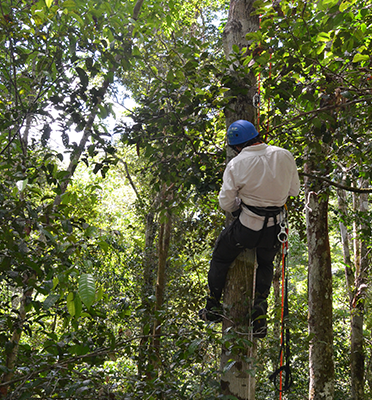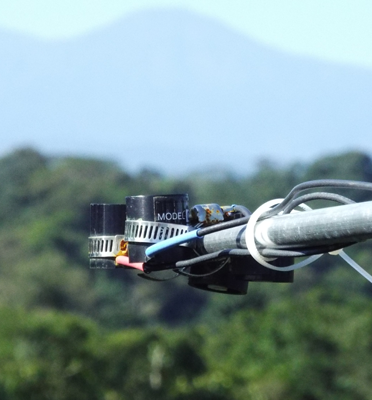Water is of vital importance for human survival. Human activity influences the way water moves around the earth, but the complexity of the system is such that it is hard to tell how far-reaching its effects really are. Researcher Lan Wang-Erlandsson, who grew up in Sweden, is nonetheless working hard to chart the earth’s water cycle with more precision.
Wang-Erlandsson’s PhD research project focuses on the way water is passed into the atmosphere and travels the world before ending up in the soil again. Evaporation from land can be roughly divided into two categories: interception and transpiration. The former means rain is intercepted and does not reach the soil. The moisture passes into the atmosphere as it falls or directly afterwards to come down as rain again in the same area. Transpiration is the part of rain absorbed by plants and trees. As the plants release the moisture into the atmosphere, it starts a journey over thousands of kilometres before falling down on the earth as rain once more.
The Yangtze basin
‘River analysis often looks no further than the drainage basin,’ Wang-Erlandsson says. ‘My research shows that a lot of the water moves through the air, which means it travels far beyond the basin.’ India and China are good examples. ‘Because there is so much irrigation in India, it masks part of the effects of deforestation on the water cycle,’ she explains. The volumes of water travelling through the air from foreign countries to the Yangtze basin are huge: they are on a par with the massive amounts of water transferred from southern to northern China in the country’s South-to-North Water Diversion Project.
Painting
It’s an all-encompassing system in which everything on Earth is linked. It is these links and environmental issues that have always interested Wang-Erlandsson and research is her big passion in life. ‘I can go where my curiosity leads me, and get to the bottom of what I think is important.’ It also gives her the freedom to arrange her own schedule which means she can make time for her art, a cherished hobby and one where science and art occasionally meet: she created a painting especially for the cover of her thesis.
Wang-Erlandsson PhD research contributes to a wider project involving TU Delft and the Stockholm Resilience Centre at Stockholm University. ‘We focused on this particular topic because we wanted to better understand how the way we use our land can affect our water systems, with implications for how we can feed the world and prosper despite great environmental change. This research takes us one step in this direction, and there is still a lot of work to do to robustly understand what all the land-water links could mean for future land and water governance.
The painting depicts the elements of the thesis - how the roots of the trees are connected to the water cycle - supplying the atmosphere with moisture that later brings rain. The two silhouettes are to show that human are a intrinsic part of both the land and water system, and that our future generations depend on how we manage these systems.





